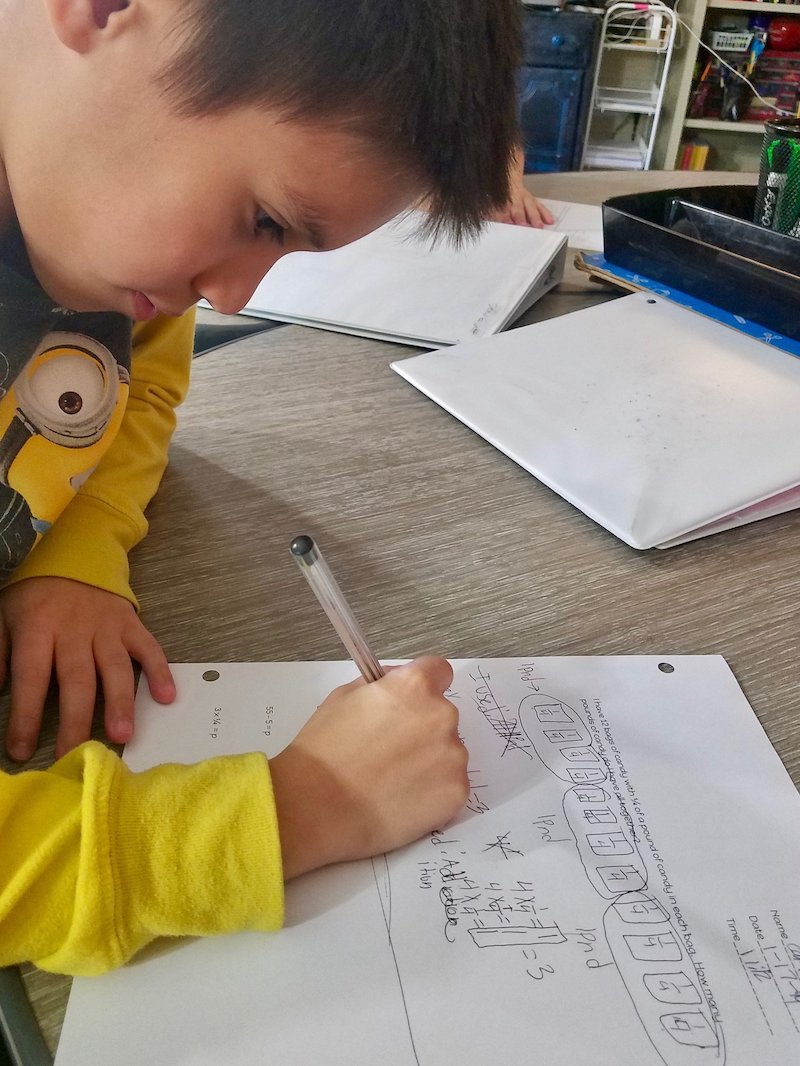Mathematical Notation and Honoring Children's Thinking, by Linda Levi
Many teachers are understandably anxious about introducing formal mathematical notation to their students. Many teachers remember times when their math instruction was focused on getting students to use specifics procedures and specific notation to represent these procedures. In retrospect, these teachers see that their students didn’t understand the procedures or notation that they were expected to use. When teachers come to embrace students’ intuitive strategies, they are often anxious about introducing formal mathematical notation because this notation belonged to a time when they put their students in a position of using strategies and notation that they didn’t understand.
I want you to know that is possible to use formal mathematical notation with your students while focusing your math instruction on children’s intuitive strategies. In fact, using formal mathematical notation can actually enhance your ability to make children’s intuitive strategies the focus of your math instruction. Here are two initial guiding principles to support you to use formal mathematical notation with your students.
1. Don’t rush to introduce formal notation. Allow students to use informal notation, or even no notation at all, when they are solving a new problem type or using a new strategy. It is perfectly fine for Kindergartens to show you how they solved a problem by reenacting the process that they carried out with blocks. Similarly, fifth graders who are just developing intuitive strategies for dividing fractions should be encouraged to record their thinking in whatever way makes sense to them.
2. When you introduce formal mathematical notation, ensure that the notation matches how the child solved the problem.
For example, here is how a third grader solved the problem:
I have 12 bags of candy with ¼ of a pound of candy in each bag. How many pounds of candy do I have all together?
His teacher, Mrs. Green, asked him how he solved the problems and explained what he did. When he said, “I saw that four bags would be one pound,” Mrs. Green asked, “Could you write the idea four bags is the same as one pound in an equation?” Mrs. Green was strategic in using the words, is the same as, to suggest the use of the equal sign but other than that she didn’t suggest any particular equation for the boy to write. He could have written an addition equation or a multiplication equation. He wrote the equation 4 ´¼ = 1. Mrs. Green reinforced his idea by saying, “I see that you had 4 groups of ¼ and that is 1. Can you write other equations to show what else you did in this problem?” As you can see on finished paper (see photo at the top of the blog post) he wrote 2 more multiplication equations to show how he figured how many pounds of candy would be the remaining 8 bags. Some children might have written the equation, 3 ´(4 ´¼) = 3 ´1 = 3 but that wasn’t how this child solved the problem.
Introducing notation that matches how the child solved the problem keeps children’s intuitive strategies the focus of math instruction and introduces children to the formal symbols we use to communicate mathematical ideas.
As this child continues to solve problems like this, how might his strategies develop? Can you see how linking formal notation to his intuitive strategy might support him to move to using only equations to solve problems like this and maintain his understanding of the strategy even when he uses only equations? If this child were to share his strategy and notation with the rest of the class, do you think some children might understand his idea that 4 groups of ¼ = 1 better when he both says the words and shows the equation 4 ´¼ = 1? Do you think some children might understand the equation 4 x ¼ = 1 better when it’s presented alongside the child’s intuitive strategy rather than as an isolated equation?
We spend a lot of time talking about mathematical notation in our CGI Professional Development courses. As you can see from the title of this blog post, I will share additional suggestions about using mathematical notation with your students in future blogs.
Linda Levi, Director of the CGI Math Teacher Learning Center
This blog post was supported in part by the U.S. Department of Education, through grant award number U423A180115 to Florida State University. The opinions expressed are those of the authors and do not represent views of the U.S. Department of Education.


